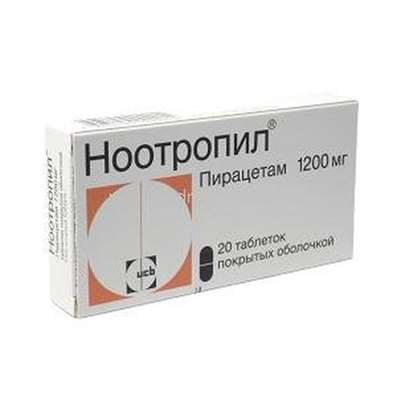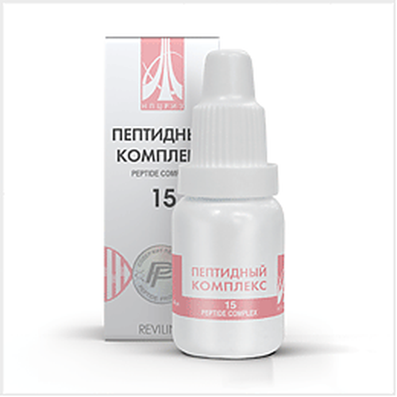Instruction for use: Estrimaks
I want this, give me price
Active substance: Estradiol
ņ“’ Code: G03CA03 Estradiol
Pharmacological groups
Estrogens [Estrogens, gestagens; their homologs and antagonists]
Estrogens [Antitumor hormonal agents and hormone antagonists]
Nosological classification (ICD-10)
E28.3 Primary ovarian failure
Hypogonadism of the ovary (primary), Hypofunction of the ovaries, Estrogen deficiency, Insufficient estrogen content in the body, Insufficiency estrogenic, Insufficiency of estrogens, Primary dysfunction of the ovaries, Estrogen-deficient conditions
M81.0 Postmenopausal osteoporosis
Menopause osteoporosis, Osteoporosis in menopause, Osteoporosis in menopause, Osteoporosis in postmenopausal women, Osteoporosis in the postmenopausal period, Postmenopausal osteoporosis, Osteoporosis in postmenopausal women, Perimenopausal osteoporosis, Postmenopausal osteoporosis, Post-menopausal osteoporosis, Postmenopausal osteoporosis, Postmenopausal demineralization of bones, Osteoporosis with estrogen deficiency, Osteoporosis in postmenopausal women, Osteoporosis in postmenopausal women and after hysterectomy
N95.1 menopausal and menopausal status of women
Atrophy of the mucosa of the lower genital tract, caused by estrogen deficiency; Vaginal dryness; Autonomic dysfunction in women; gipoestrogeniya state; Deficiency of estrogen in menopausal women; Degenerative changes of the mucous membrane in the menopause; Natural menopause; an intact uterus; climacteric; Menopause women; Menopause in women; menopausal depression; Climacteric ovarian dysfunction; Menopause; Climacteric neurosis; Menopause; Menopausal symptoms complicated psychovegetative; Climacteric syndrome; Climacteric vegetative disorders; Climacteric psychosomatic disorder; menopausal disorders; Menopausal disorders in women; menopausal condition; Climacteric vascular disorders; Menopause; Menopausal vasomotor symptoms; menopausal period; Lack of estrogen; Feeling the heat; Pathological menopause; perimenopause; menopause; postmenopausal; Premature menopause; premenopauznom period; tides; hot flashes; flushing in the Meno and postmenopausal; Hot flashes / hot flashes in menopause; Heart attack during menopause; Early menopause in women; Disorders of menopause; climacteric syndrome; Vascular complications of menopause; Physiological menopause; Estrogendefitsitnye state; premature Menopause
Composition and form of release
Tablets covered with a film membrane 1 tab.
Estradiol (in the form of estradiol hemihydrate 2.07 mg) 2 mg
Excipients:
composition of the tablet core: silicon colloid anhydrous; magnesium stearate; potato starch; povidone; talc; corn starch; lactose monohydrate
composition of the film shell: silicon colloid anhydrous; titanium dioxide E171, 77891; macrogol 6000; "Sepiophilus 003" (composition: hypromellose and macrogol stearate); black iron oxide E172, CI77499
in the planar cell pack of 28 pcs .; in a pack of cardboard 1 or 3 packs.
Description of dosage form
Light gray convex tablets, covered with a film sheath.
pharmachologic effect
The pharmacological action is estrogenic.
Contains estradiol, identical to endogenous, produced by the ovaries.
Pharmacodynamics
Causes mild proliferation of the endometrium and improves trophism of the genitourinary system. Estradiol plays an important role in the metabolism of bone tissue and thus inhibits the development of osteoporosis. Influencing the hypothalamic-pituitary system, eliminates vegetative and psychoemotional disorders.
Pharmacokinetics
After oral administration, it is quickly and completely absorbed. At the first passage through the liver, it is metabolized to less active products: estrone and estriol. It binds to blood plasma proteins, mainly with globulin binding sex hormones. Isolated with bile in the lumen of the small intestine and reabsorbed. The final loss of activity occurs as a result of oxidation in the liver. Metabolism products are secreted mainly by kidneys in the form of sulfates and glucuronides.
Indications
Treatment of symptoms associated with estrogen deficiency in postmenopausal women: climacteric syndrome (vasomotor lability, atrophy of urogenital organs); prevention of postmenopausal osteoporosis and related bone fractures.
Contraindications
Pregnancy or suspicion of pregnancy, lactation, history of or suspected malignant breast tumor, an estrogen-dependent tumor (including genital organs), acute or chronic liver disease or the presence of such a history of the disease if the liver function normalized, Dubin-Johnson or Rotor syndromes, thromboembolic diseases (including in the anamnesis), thrombophlebitis, irregular vaginal bleeding of unclear etiology, severe heart and kidney disease, higher (sensitivity to any component of the drug, cerebrovascular accident (ischemic or hemorrhagic stroke), retinopathy, angiopathy, sickle cell anemia, fat metabolism disorders, severe itching or cholestatic jaundice (including an increase in their manifestations during the previous pregnancy or on the background of taking steroid medications, otosclerosis (including its aggravation during pregnancy), inflammatory diseases of female genital organs (salpingoophoritis, endometritis), hyperestrogenic stage of menopause period, diffuse connective tissue diseases, pituitary tumors.
Relative contraindications: bronchial asthma, diabetes mellitus, migraine, epilepsy, arterial hypertension, heart failure, IHD; hepatic and / or renal failure, edematous syndrome, endometriosis, fibrocystic mastopathy, porphyria.
pregnancy and lactation
An established or suspected pregnancy, lactation period are contraindications to the use of the drug.
Side effects
On the part of the genitourinary system: smearing or breakthrough bleeding, changing the nature of vaginal discharge, dysmenorrhea, metrorrhagia (a sign of overdose of estradiol), premenstrual syndrome, increasing the size of fibroids and / or uterine leiomyoma, changing cervical secretion, endometrial hyperplasia (with progestogen-free appointment), carcinoma endometrium (in menopause in women with an intact uterus), symptoms of cystitis (without bacterial infection), changes in libido.
On the part of the endocrine system: the tension and / or increase in the mammary glands, secretion of secret.
From the digestive system: nausea, vomiting, spasms, pain in the epigastric region, bloating, flatulence, cholestatic jaundice, cholelithiasis.
From the cardiovascular system: increased blood pressure, tboembolia.
On the part of the skin: chloasma, melasma, melasma, erythema multiforme, nodosa erythema, hemorrhagic rash, alopecia, hirsutism.
From the side of the organ of vision: discomfort when wearing contact lenses, impaired vision due to changes in the curvature of the cornea.
From the side of the central nervous system: headache, migraine, dizziness, chorea, depression.
Other: increased or decreased body weight, with prolonged use - a violation of sodium, calcium and water exchange with the formation of peripheral edema, a decrease in tolerance to carbohydrates, worsening of porphyria, spasms of the calf muscles.
Interaction
Barbiturates, tranquilizers, narcotic analgesics, anesthesia and some antiepileptic drugs (carbamazepine, phenytoin), inductors of microsomal liver enzymes accelerate the metabolism of estradiol, reduce the effect of the drug.
The concentration in the plasma decreases with the simultaneous use of phenylbutazone and certain antibiotics (ampicillin, rifampicin), which is associated with changes in microflora.
Folic acid and thyroid drugs strengthen the action of estradiol.
Estradiol increases the effectiveness of lipid-lowering drugs.
Weakens the effects of drugs male sex hormones, hypoglycemic, diuretic, antihypertensive drugs and anticoagulants.
Reduces glucose tolerance, so it may be necessary to adjust the dose of hypoglycemic agents.
Dosing and Administration
Inside, not liquid and squeezed a small amount of liquid, preferably at the same time of day, daily for 1 table. per day (2 mg), without interruptions. Duration of treatment is 6 months, after which a medical examination is conducted to decide whether it is advisable to continue estrogen replacement therapy. For women with a deleted uterus or menopause, treatment can be started any day; who have menstruation, the first pill is prescribed from the 5th day of the menstrual cycle. Women with an intact uterus should be given a drug in combination with progestogen to protect the endometrium.
Overdose
Symptoms: nausea, vomiting, in some cases - metrorrhagia.
Treatment: withdrawal of the drug, symptomatic therapy aimed at maintaining vital functions. There is no specific antidote.
Precautionary measures
To avoid complications, use strictly according to the doctor's prescription.
Before starting treatment with estradiol the patient should perform a thorough general medical and gynecological examination, paying special attention to blood pressure, the condition of the mammary glands, the abdominal cavity and pelvis and, if necessary, the cytological analysis of the endometrium.
With prolonged treatment with Estrimaks , a similar examination should be performed every 6-12 months.
In the event of irregular uterine bleeding during the administration of the drug, a cytological analysis of the endometrium should be performed.
Hyperplasia (atypical or glandular) often precedes endometrial cancer. When irregular menstrual flow (in women with an intact uterus) appears against the background of estradiol treatment, diagnostic scraping should be performed to exclude the malignant neoplasm of the uterus.
The risk of the appearance of endometrial hyperplasia and carcinoma increases with prolonged estrogen monotherapy (more than 1 year). The appropriate addition of progestogen to estrogen therapy reduces this risk.
In postmenopausal women who have been on hormonal replacement therapy for a long time, the risk of breast cancer increases somewhat. If the duration of treatment is more than 5 years, it is necessary to carefully weigh the positive effects of treatment with adverse effects.
Patients on long-term treatment should be subjected to a regular examination of the mammary glands, including. teach them a regular self-examination. If necessary, mammography is carried out regularly. Especially caution should be exercised when administering estrogens to women who have or have had nodular or fibrocystic breast changes in the past. In such cases careful monitoring and regular mammography should be performed.
In the course of hormone replacement therapy, the course of some diseases can worsen. Patients with otosclerosis, multiple sclerosis, systemic lupus erythematosus, porphyria, melanoma, epilepsy, migraine and bronchial asthma should be inspected regularly and thoroughly.
During hormone replacement therapy, patients with hypertension should regularly monitor blood pressure.
In the initial period of treatment, patients with diabetes require careful monitoring because of a possible decrease in glucose tolerance.
The change in the level of estrogen in the blood can affect the performance of some endocrine and liver functions.
Estrogens can cause fluid retention in the body, so patients with impaired cardiac or renal function require careful monitoring.
Estrimaks is not a contraceptive and does not restore fertility.
For 4-6 weeks before the planned surgical interventions and during periods of prolonged immobilization, it is recommended to discontinue treatment with Estrimaks to avoid thrombosis.
In addition, the drug should be discontinued immediately in the following cases:
- deep vein thrombosis, thromboembolic diseases;
- a significant increase in blood pressure;
- the appearance of jaundice;
- the appearance of a migraine-like headache;
- sudden impairment of vision;
- Pregnancy.
The drug does not affect the ability to drive and perform work associated with an increased risk of injury.
The drug is not to be administered to children and men.
storage conditions
At a temperature of 15-30 į C.
Keep out of the reach of children.
Shelf life
3 years.
Do not use after the expiry date printed on the package.

 Cart
Cart





